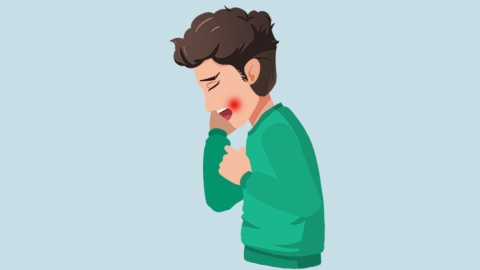Why does it hurt when the upper and lower teeth touch after getting braces, and what should I do?
In general, pain when the upper and lower teeth touch after wearing braces may be caused by initial tooth pressure from the braces, irritation from brace components, enamel damage, gingivitis, or apical periodontitis. It is recommended to seek medical attention promptly, identify the underlying cause, and improve symptoms under a doctor's guidance through general treatments, medications, etc. Specific analyses are as follows:

1. Initial tooth pressure from braces: When braces are first worn or adjusted, corrective forces applied to the teeth cause slight tooth movement, stretching the periodontal tissues and resulting in pain. Avoid chewing hard foods with the affected teeth during this time; opt for soft foods such as porridge or noodles. Pain typically subsides gradually within 1–2 weeks. Applying a cold compress to the outside of the cheek may also help reduce discomfort.
2. Irritation from brace components: Brackets, wires, or other brace parts may be improperly positioned or have sharp edges, irritating the gums or tooth structures when the upper and lower teeth bite together, causing pain. Seek prompt medical care for a professional adjustment or smoothing of sharp edges. Do not attempt self-adjustment to avoid damaging oral tissues. Pain usually decreases gradually after proper adjustment.
3. Enamel damage: Inadequate oral hygiene during orthodontic treatment can lead to food debris accumulation, causing tooth decay and enamel damage. When upper and lower teeth touch, exposed dentin may become stimulated, leading to pain. Patients should follow medical advice to apply medications such as sodium fluoride glycerin paste, silver nitrate solution, or ammoniated silver nitrate solution to the affected area.
4. Gingivitis: Bacterial buildup around braces can trigger gum inflammation, causing redness, swelling, and sensitivity. Pain occurs when biting causes pressure on inflamed gums. Patients should use prescribed mouthwashes such as compound chlorhexidine rinse, hydrogen peroxide solution, or metronidazole rinse to clean the mouth and control inflammation.
5. Apical periodontitis: Pre-existing pulp infection in a tooth may spread to the periapical tissues after braces are placed, causing pain when biting exerts pressure on the root apex. Patients should first undergo root canal treatment to remove infected tissue and eliminate inflammation. Orthodontic correction can continue only after the inflammation is under control.
Maintain good oral hygiene by brushing teeth morning and night, and rinsing after meals to keep braces and the mouth clean. Avoid overly sweet or sticky foods to reduce the risk of cavities and periodontal problems, supporting successful orthodontic treatment and minimizing tooth pain and discomfort.








